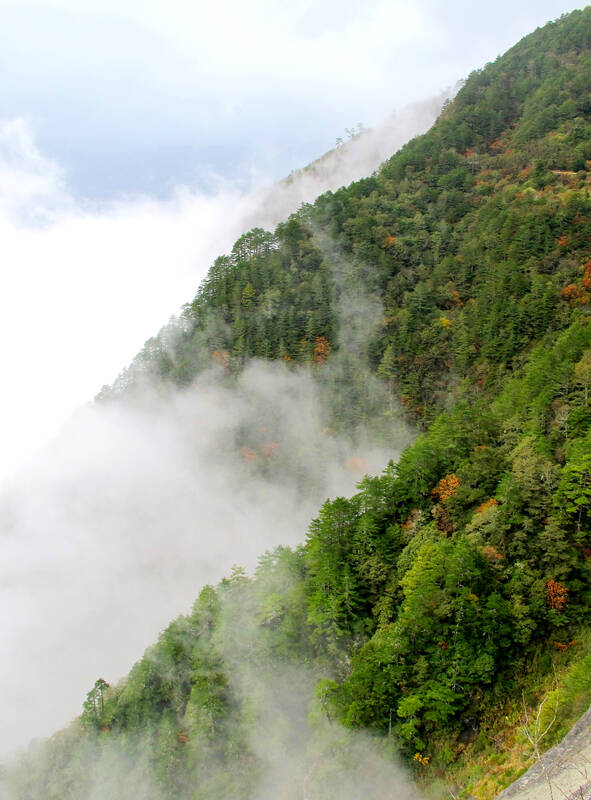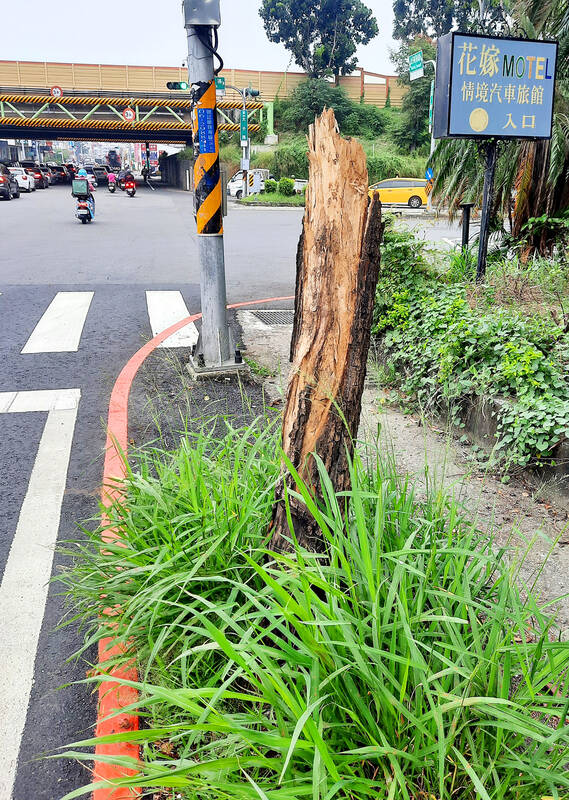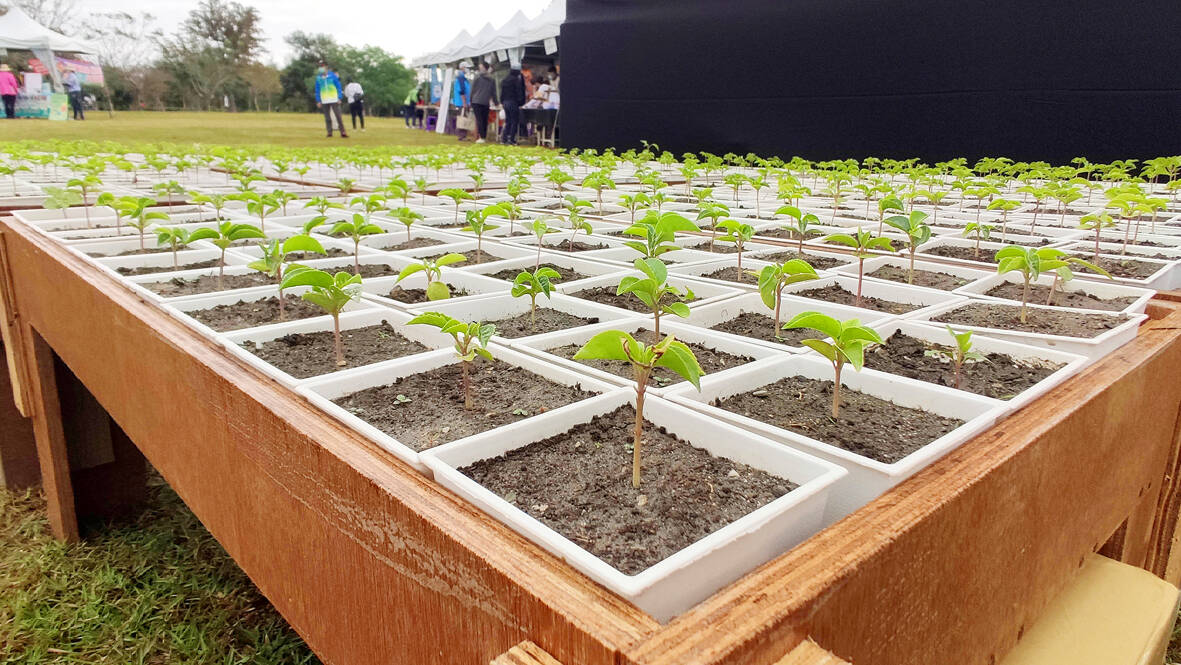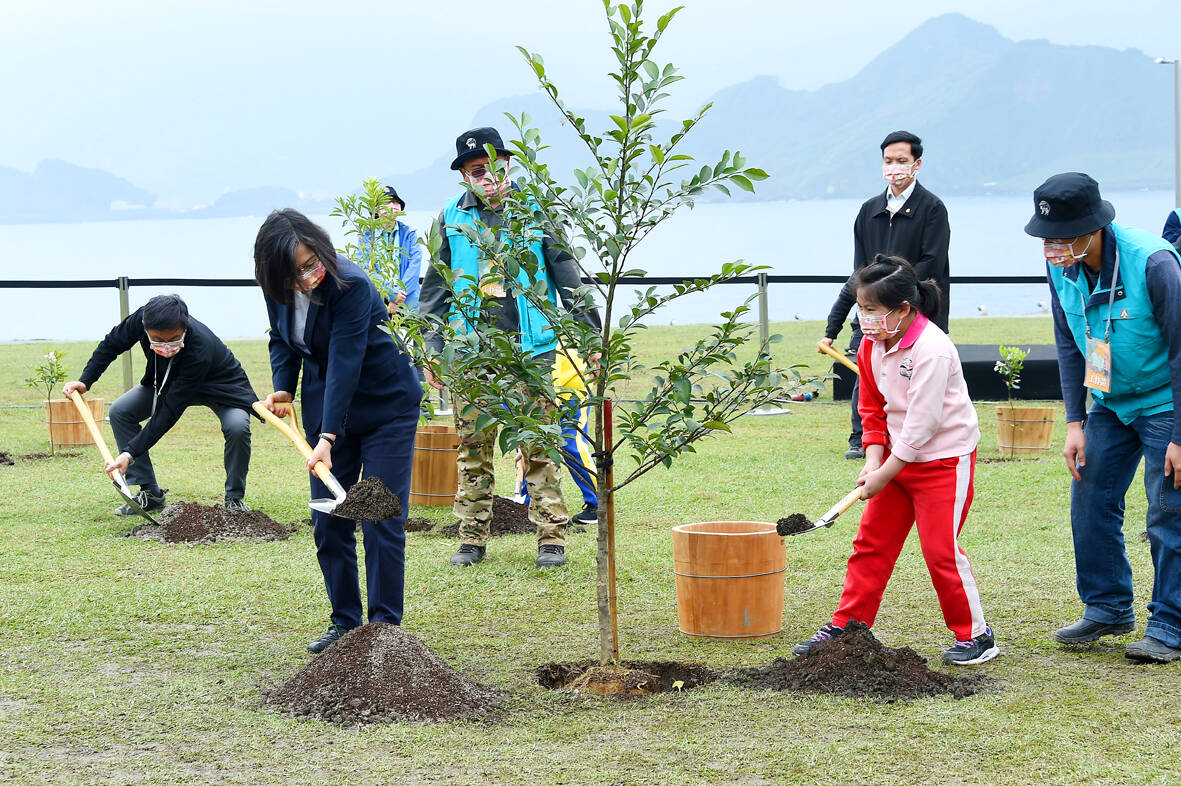Last month, Bill Gates surprised some people by saying that planting trees isn’t one of his responses to climate change. Speaking at the New York Times Climate Forward Summit on Sep. 21, the billionaire described relying on tree-planting efforts to roll back global warming as “complete nonsense.”
Gates is right. Even if humanity was to utilize all suitable land and plant a trillion trees — a goal endorsed by the World Economic Forum, World Wildlife Fund, Wildlife Conservation Society and other organizations — new woodlands wouldn’t by themselves come close to countering global carbon dioxide emissions.
The Microsoft founder went on to express his preference for technologies designed to remove carbon from the atmosphere, and for providing low-income households with eco-friendly heat pumps and solar panels.

Photo: Steven Crook
If we compare the carbon-absorbing capacity of forests with the reduction in carbon emissions that can be achieved by using the land for electricity-generating photovoltaic arrays, “solar panels always win,” Chiang Jyh-min (江智民), a professor in the Department of Life Science at Tunghai University, concedes.
“What’s more, trees in cities sequester less carbon than trees in natural forests. So why not cut down all the trees and ‘grow’ green electricity instead?” he asks.
EMOTIONAL BENEFITS

Photo: Steven Crook
Chiang has a number of answers to that question. “First, trees cool our cities. They reduce the heat island effect by means of shading and evaporation,” he says. In a country like Taiwan, lower urban temperatures mean less fossil fuel has to be burned to power fans and air-conditioning units.
What’s more, trees improve air quality. According to a study by four Taiwanese scholars published in the Aug. 2022 edition of Journal of Environmental Quality, the average sidewalk tree in Taipei intercepts 830g of suspended particles annually. Some species are more effective than others, because they have larger leaves and/or stay foliated for more weeks each year.
“Another direct and immediate benefit is that they improve people’s moods,” Chiang says, pointing to a Jul. 23, 2015 article in The New Yorker magazine which discussed researchers’ efforts to quantify the benefits of urban trees.

Photo: CNA
In Pennsylvania, it was noticed that gallbladder-surgery patients given rooms which overlooked trees were discharged almost a day sooner, on average, than those in otherwise identical rooms whose windows faced blank walls. A study in Toronto suggested that, after controlling for income, education and age, 11 trees per block were enough to bring about tangible improvements in the rates of heart disease, stroke and diabetes.
As noted in this newspaper on Apr. 7, 2021 (“The importance of throwing shade”), German scientists have concluded that individuals living near street trees are less likely to be prescribed antidepressant medications than those who don’t have many trees in their neighborhood.
Conversely, there appears to be a correlation between the spread of the emerald ash borer, a beetle native to northeast Asia, and rising rates of cardiovascular and respiratory illnesses. According to one study, the borer’s decimation of an estimated 100 million green ash and black ash trees may have indirectly caused 21,000 excess deaths in 15 US states between 1990 and 2007.

Photo: Tu Chien-jung, Taipei Times
“‘Making people feel better’ should be a priority in policy making. Planting trees can provide immediate and direct benefits to the public, unlike parking lots,” Chiang, who also serves as director of his university’s Center for Ecology and Environment, says.
ENHANCING BIODIVERSITY
Even in urban areas where there’s no real understory, trees enhance biodiversity.
“They provide habitats for organisms of various taxa, including microbes, fungi, algae, insects, birds, mammals and plants also known as epiphytes,” Chiang says.
As trees live for a long time, they can have a lasting impact on their location, he explains. And because the construction of an urban area represents the destruction of a natural environment, when deciding what type of trees should be planted in parks or beside roads, “we should think how best to seize this opportunity to restore the destroyed ecosystem,” he says.
“The first rule is to plant native tree species,” Chiang says. “Native tree species and their association with other organisms precede human settlement by thousands, perhaps millions, of years. By planting native species, bit by bit, we can gradually restore a long lost ecosystem, including the amazing interactions within it.”
His current research focus is on the impacts of potential climate and land-use changes on the sustainability of forest ecosystem services around Lienhuachih (蓮華池) in Nantou County.
Chiang’s team, which receives funding from the National Science and Technology Council, is also collaborating with local residents to provide environmental education, hoping they and business owners can treasure forests’ ecosystem services and make eco-friendly decisions, such as organic farming and proper waste-water management when operating campgrounds.
Large trees, such as the banyans which shade temple forecourts throughout Taiwan, often outlive the people who grow up nearby. Chiang describes these landmark trees as “foundations not just for other organisms, but for generations of human and community memories.”
LAND COMPETITION
Preserving such trees at a time when urban land values are sky high isn’t easy. Even those growing on government-owned property sometimes fall victim to greed.
In 2015, Chiang discovered in his own neighborhood in Taichung that trees in front of advertising hoardings were dead or missing altogether. After compiling current and historical Google Street photos to confirm that trees had existed in those places before the hoardings went up, he wrote to Taichung’s mayor.
“A city government official replied and confirmed there was no record of tree removal due to death, wind damage or other factors. Obviously, someone had killed those trees,” Chiang recalls.
The official also said that inspections would be stepped up and fines imposed if people were caught damaging trees. Moreover, new trees would be planted in those places the following year.
In 2016, Chiang asked the city government about sidewalk tree pits that had been concreted over. An official told him that they hadn’t been sealed by municipal personnel, and that “it is suspected to be the work of private individuals.”
Along that stretch of road, Chiang is happy to note, trees are once again thriving.
“I like to tell my friends they’re ‘my trees.’ I’m pretty sure the trees first planted there were killed by humans who didn’t like them. Every year, I tell my students about this case. Responsible, determined and persistent citizens can make big changes,” he says.
In Taiwan’s case, it is moot to debate whether planting trees should be a key part of its climate strategy. The country simply doesn’t have large tracts of vacant land that could be afforested to reduce net carbon emissions, especially if the authorities hope at the same time to reduce the current (and alarming) dependence on food imports.
Change has to occur in the manufacturing, construction and transportation sectors. Yet, as Chiang makes clear, there’s no shortage of other reasons why we should try to preserve every existing tree, whether it’s beside a busy thoroughfare or hidden in a remote corner of a national park.
Steven Crook, the author or co-author of four books about Taiwan, has been following environmental issues since he arrived in the country in 1991. He drives a hybrid and carries his own chopsticks. The views expressed here are his own.

Last week saw the appearance of another odious screed full of lies from the People’s Republic of China (PRC) Ambassador to Australia, Xiao Qian (肖千), in the Financial Review, a major Australian paper. Xiao’s piece was presented without challenge or caveat. His “Seven truths on why Taiwan always will be China’s” presented a “greatest hits” of the litany of PRC falsehoods. This includes: Taiwan’s indigenous peoples were descended from the people of China 30,000 years ago; a “Chinese” imperial government administrated Taiwan in the 14th century; Koxinga, also known as Cheng Cheng-kung (鄭成功), “recovered” Taiwan for China; the Qing owned

In Taiwan’s politics the party chair is an extremely influential position. Typically this person is the presumed presidential candidate or serving president. In the last presidential election, two of the three candidates were also leaders of their party. Only one party chair race had been planned for this year, but with the Jan. 1 resignation by the currently indicted Ko Wen-je (柯文哲) of the Taiwan People’s Party (TPP) two parties are now in play. If a challenger to acting Chairman Huang Kuo-chang (黃國昌) appears we will examine that race in more depth. Currently their election is set for Feb. 15. EXTREMELY

Jan. 20 to Jan. 26 Taipei was in a jubilant, patriotic mood on the morning of Jan. 25, 1954. Flags hung outside shops and residences, people chanted anti-communist slogans and rousing music blared from loudspeakers. The occasion was the arrival of about 14,000 Chinese prisoners from the Korean War, who had elected to head to Taiwan instead of being repatriated to China. The majority landed in Keelung over three days and were paraded through the capital to great fanfare. Air Force planes dropped colorful flyers, one of which read, “You’re back, you’re finally back. You finally overcame the evil communist bandits and

They increasingly own everything from access to space to how we get news on Earth and now outgoing President Joe Biden warns America’s new breed of Donald Trump-allied oligarchs could gobble up US democracy itself. Biden used his farewell speech to the nation to deliver a shockingly dark message: that a nation which has always revered its entrepreneurs may now be at their mercy. “An oligarchy is taking shape in America of extreme wealth, power and influence that literally threatens our entire democracy, our basic rights and freedoms,” Biden said. He named no names, but his targets were clear: men like Elon Musk